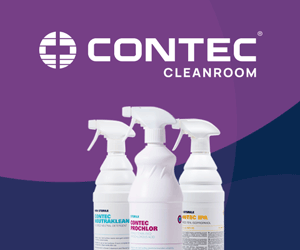Study findings indicate Bioquell system should be used to maximise patient safety
Hospital rooms decontaminated using Bioquell HPV technology significantly less likely to harbour multidrug-resistant organisms
A new study conducted by infection control experts at Johns Hopkins Hospital and published in the January 2013 issue of Clinical Infectious Diseases demonstrates that patients admitted to hospital rooms decontaminated using Bioquell hydrogen peroxide vapour technology, rather than standard cleaning protocols, are significantly less likely to acquire multidrug-resistant organisms (MDROs), or so-called hospital superbugs.
The Bioquell system consists of automated devices that disperse an Environmental Protection Agency (EPA)-registered sterilant into the air and onto surfaces and then convert the sterilant to a harmless state.
Previous research has shown that being admitted to a hospital room where the previous patient was infected or colonised with an MDRO, such as Clostridium difficile, methicillin-resistant Staphylococcus aureus (MRSA) or vancomycin-resistant enterococci (VRE), increases the subsequent patient’s chance of acquisition. The objective of this study was to determine whether the Bioquell system, which has been shown to eliminate surface contamination in patient rooms, could negate this risk.
Researchers found that patients admitted to rooms decontaminated using the automated technology were 64% less likely to acquire MDROs than patients admitted to rooms disinfected using conventional methods, such as mopping with bleaching agents.
‘The findings indicate that Bioquell hydrogen peroxide vapour disinfection should be implemented in high-risk environments to maximise patient safety,’ said James Salkeld, head of healthcare at Bioquell. ‘Before this research, hospitals had legitimately asked whether they could afford the 90 minutes it takes to perform a Bioquell cycle. With the study showing acquisition being reduced by over 50% in patients admitted to decontaminated rooms, this begs a new question: can they afford not to?’
Study design and results
The 30-month prospective cohort study was performed on six high-risk units. Following a 12-month pre-intervention phase, hydrogen peroxide vapour (HPV) was implemented on three units to decontaminate the rooms of patients known to be infected with MDROs, following their discharge.
Researchers noted that the prior room occupant was known to be infected with an MDRO in 22% of 6350 admissions.
Monthly environmental samples for MDROs were collected on all study units for three pre-intervention months and six intervention months. The risk of MDRO acquisition in patients admitted to rooms decontaminated using HPV was compared with rooms disinfected using standard methods.
Patients admitted to rooms decontaminated using HPV were 64% less likely to acquire any MDRO (incidence rate ratio [IRR], 0.36; 95% confidence interval [CI], .19-.70; p<.001) and 80% less likely to acquire VRE (IRR, 0.20; 95% CI, .08-.52; p< .001) after adjusting for other factors.
The proportion of rooms environmentally contaminated with MDROs was reduced significantly on the HPV units (relative risk, 0.65, p= .03), but not on non-HPV units.
More than 1,300 rooms were decontaminated using HPV during the course of the study, with no health and safety problems reported. The implementation of Bioquell’s advanced technology was also reported to be well accepted by unit staff. Bioquell, Inc. provided the robotic hydrogen peroxide vapour generators and supplies for the study, as part of the company’s commitment to support infection control research.
The study can be found on the Clinical Infectious Diseases website at http://cid.oxfordjournals.org/content/early/2012/10/01/cid.cis839.abstract.





